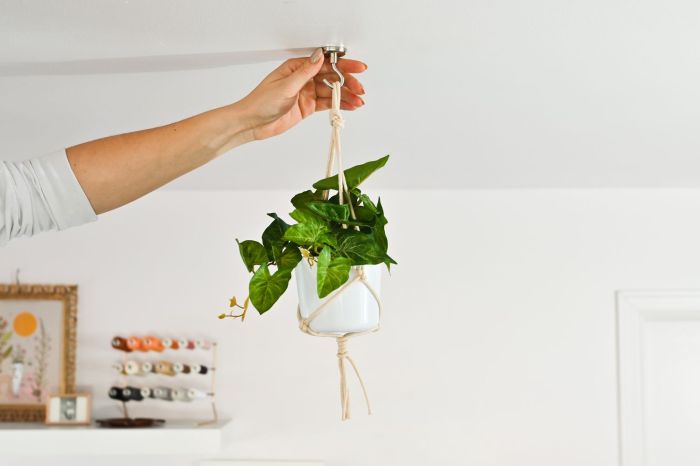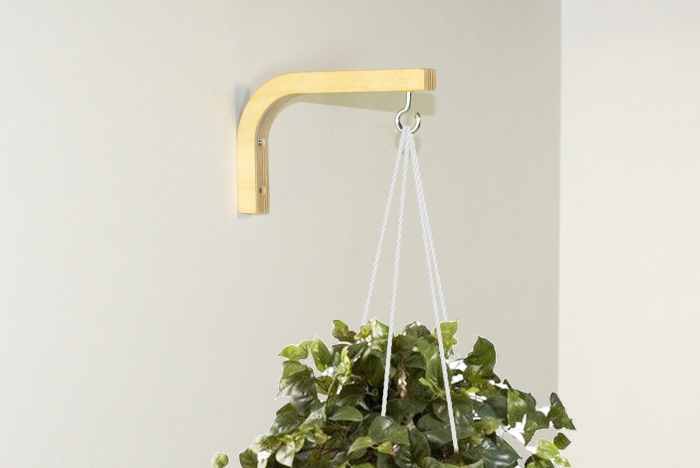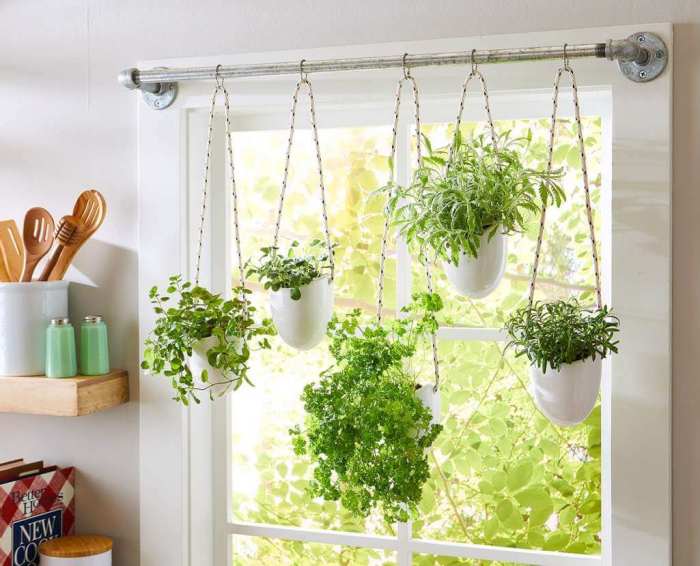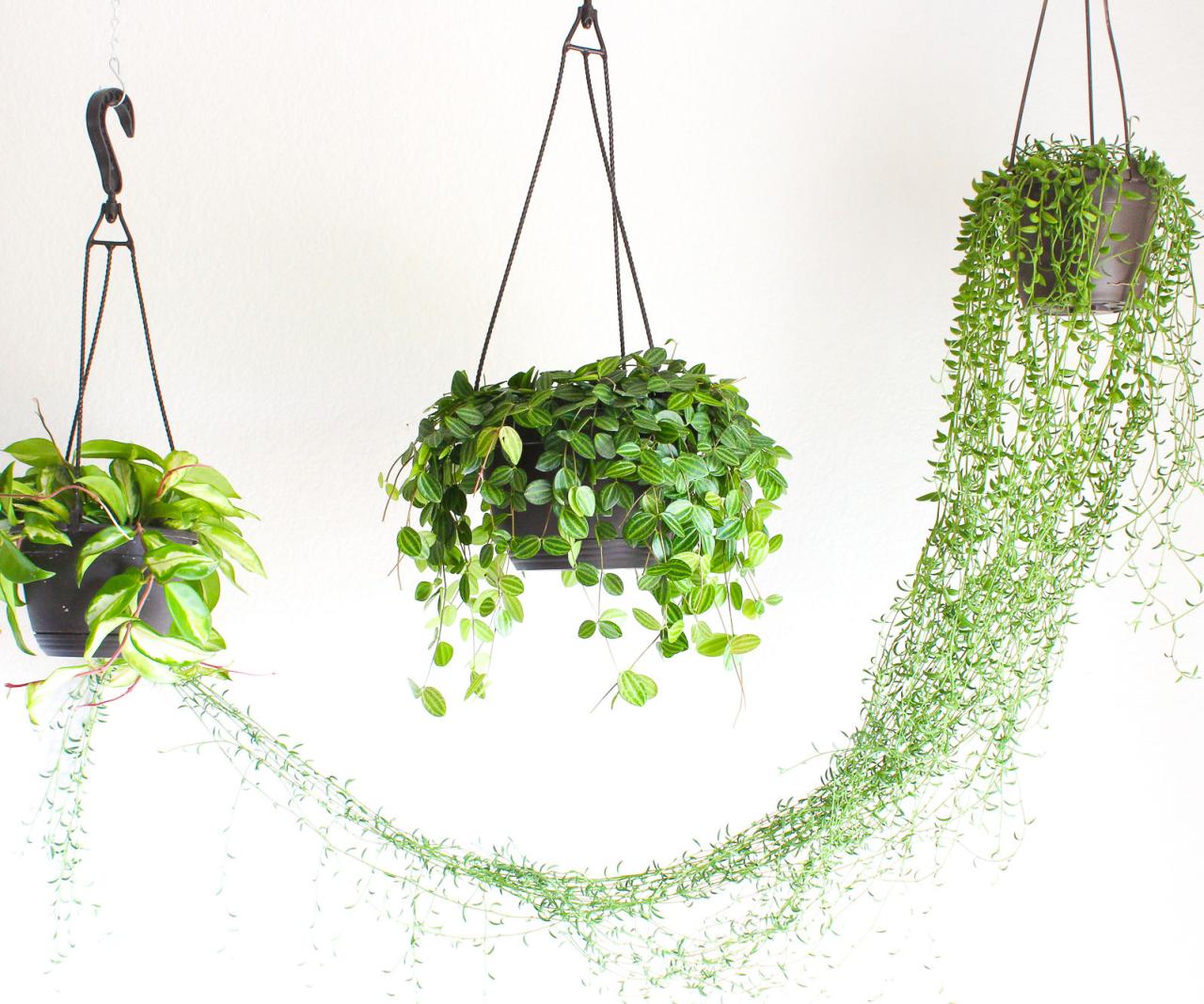Hanging plants with command hooks is a popular home décor trend that combines the beauty of nature with the convenience of modern technology. This guide provides everything you need to know to create stunning vertical gardens and space-saving arrangements in your home.
From choosing the right plants and hooks to hanging techniques and care tips, we’ll cover it all to help you bring the outdoors in with style and ease.
Plants suitable for hanging with hooks

Hanging plants add a touch of greenery and elegance to any room. With the right plants and the use of command hooks, you can easily create a vertical garden indoors. Here are some of the best plants for hanging with hooks, along with their characteristics and care tips:
Considerations for hanging plants
When choosing plants for hanging, it’s important to consider their weight and size. Smaller plants are easier to hang and won’t weigh down the hooks. Plants with trailing or cascading foliage look especially beautiful when hung, as they will cascade over the sides of the pot.
Recommended plants
- Spider plant (Chlorophytum comosum):Spider plants are one of the most popular hanging plants. They are easy to care for and produce long, trailing stems with baby plants at the end. Spider plants prefer bright indirect light and well-drained soil.
- Pothos (Epipremnum aureum):Pothos is another easy-care hanging plant. It has heart-shaped leaves that come in a variety of colors, including green, yellow, and white. Pothos prefers bright indirect light and well-drained soil.
- String of pearls (Senecio rowleyanus):String of pearls is a unique hanging plant with long, trailing stems that resemble strings of pearls. It prefers bright indirect light and well-drained soil.
- Burro’s tail (Sedum morganianum):Burro’s tail is a succulent with trailing stems that resemble a donkey’s tail. It prefers bright indirect light and well-drained soil.
- Air plants (Tillandsia spp.):Air plants are epiphytes, which means they grow on other plants or objects. They do not need soil and can be hung from hooks or placed on shelves. Air plants prefer bright indirect light and high humidity.
Choosing the right hooks
Selecting the appropriate hooks is crucial for ensuring the safety and stability of your hanging plants. Various types of hooks are available, each with its own weight capacity and suitability for different surfaces.
Hanging plants with command hooks are a great way to add greenery to your home without taking up floor space. Command hooks are easy to install and can be removed without damaging your walls. For those who want a more low-maintenance option, bunnings self watering hanging pots are a great choice.
These pots have a built-in reservoir that waters your plants for you, so you don’t have to worry about forgetting to water them. Whether you choose to use command hooks or self-watering pots, hanging plants are a great way to add life and style to your home.
Types of Hooks, Hanging plants with command hooks
- Adhesive Hooks:These hooks are easy to install and remove without damaging the surface. They come in a range of weight capacities, from a few pounds to several pounds.
- Screw-in Hooks:These hooks provide a more secure hold than adhesive hooks. They require drilling a hole in the surface, but they can support heavier loads.
- Toggle Bolts:Toggle bolts are ideal for hanging heavy objects on hollow walls or ceilings. They expand behind the surface to create a secure anchor.
Surface Preparation and Hook Placement
Proper surface preparation and hook placement are essential for preventing accidents and ensuring the longevity of your hanging plants.
- Clean the Surface:Remove any dirt or debris from the surface to ensure a strong bond between the hook and the surface.
- Choose the Right Hook:Select a hook that is appropriate for the weight of your plant and the surface you are hanging it on.
- Position the Hook:Place the hook securely on the surface, ensuring that it is level and centered.
- Test the Hook:Before hanging your plant, test the hook by gently pulling on it to ensure it is securely fastened.
Techniques for hanging plants with hooks: Hanging Plants With Command Hooks

Hanging plants with hooks is a great way to add greenery to your home without taking up valuable floor space. There are a variety of different hanging methods you can use, depending on the type of plant you have and the look you want to achieve.
One of the most common methods is to use S-hooks. S-hooks are simple, inexpensive, and easy to use. To hang a plant with an S-hook, simply hook the hook over the rim of the pot and then hang the pot from the hook.
Another popular method is to use macrame. Macrame is a type of knotting that can be used to create beautiful and unique plant hangers. To make a macrame plant hanger, you will need some macrame cord and a few basic knots.
There are many different macrame plant hanger patterns available online, so you can find one that fits your style and skill level.
Hanging plants with command hooks offer a convenient solution for adding greenery to your home without drilling holes. However, if you prefer a more rustic look, consider hanging plants with rope . Rope provides a natural and versatile way to suspend plants from ceilings, walls, or beams.
Whether you opt for command hooks or rope, hanging plants add a touch of life and style to any space.
No matter which method you choose, be sure to use a hook that is strong enough to support the weight of the plant and the pot. You should also make sure to hang the plant in a location where it will get plenty of sunlight.
Hanging plants with command hooks are a popular and convenient way to add greenery to your home. If you’re looking for cascading plants that are perfect for hanging, Bunnings has a wide selection to choose from. Some of our favorites include the String of Hearts, Pothos, and Spider Plant.
To hang your plants with command hooks, simply clean the surface of the wall where you want to hang them, remove the adhesive backing from the hooks, and press them firmly into place. Then, hang your plants on the hooks and enjoy the beauty of your new indoor garden.
For more information on cascading plants at Bunnings, visit cascading plants bunnings .
Safety precautions
When hanging plants with hooks, it is important to take a few safety precautions.
- Make sure the hook is securely attached to the wall or ceiling.
- Use a hook that is strong enough to support the weight of the plant and the pot.
- Hang the plant in a location where it will not be knocked over or damaged.
- Keep the plant out of reach of children and pets.
Design ideas and inspiration
Hanging plants with command hooks offers a myriad of creative display options, transforming living spaces into vibrant and lush oases. From vertical gardens that cascade down walls to wall art that incorporates greenery, the possibilities are endless.
Vertical gardens, for instance, utilize hooks to create a living wall of plants, adding a touch of nature to any room. This space-saving solution is perfect for small apartments or areas with limited floor space. By suspending plants vertically, one can maximize vertical space and create a stunning focal point.
Wall art with hanging plants
Hanging plants can also be incorporated into wall art, creating unique and eye-catching displays. By suspending planters from hooks at different heights and angles, one can create a dynamic composition that adds depth and interest to a wall. Plants with trailing vines, such as pothos or ivy, can be used to create a cascading effect, while succulents and air plants add a touch of greenery without requiring much maintenance.
Space-saving arrangements
Command hooks also provide space-saving solutions for hanging plants in smaller spaces. By utilizing hooks to suspend planters from ceilings or shelves, one can maximize vertical space and free up valuable floor area. This approach is particularly beneficial in compact living quarters or areas with limited storage space.
Care and maintenance

Hanging plants require specific care and maintenance to thrive and remain healthy. Understanding their watering, fertilizing, and pruning needs is essential for their well-being. Additionally, preventing pests and diseases is crucial to ensure their longevity.
Watering
Watering hanging plants can be challenging due to their height and limited access to water. It’s important to determine the specific water requirements of each plant species and adjust accordingly. Generally, hanging plants prefer moist but not soggy soil. Allow the top inch of soil to dry out between waterings, and avoid overwatering, as this can lead to root rot.
Fertilizing
Hanging plants benefit from regular fertilizing to replenish essential nutrients. Use a balanced liquid fertilizer diluted to half strength and apply it every two to four weeks during the growing season. Avoid over-fertilizing, as this can burn the plant’s roots.
Pruning
Pruning hanging plants is essential for maintaining their shape and promoting new growth. Remove dead or damaged leaves and stems regularly. For trailing plants, trim back long, leggy stems to encourage bushier growth. Pruning also helps to control the plant’s size and prevent it from becoming overgrown.
Preventing pests and diseases
Hanging plants are susceptible to pests and diseases, just like other plants. Regular inspection is crucial to detect any issues early on. Common pests include aphids, mealybugs, and spider mites. To prevent pests, keep the plants clean and avoid overcrowding.
For diseases, ensure proper watering and drainage to prevent root rot and fungal infections.
Final Wrap-Up

Whether you’re a seasoned plant enthusiast or a beginner looking to add some greenery to your home, hanging plants with command hooks is an accessible and versatile way to transform your living space. With proper care and maintenance, your hanging plants will thrive and bring years of joy and beauty to your home.
Helpful Answers
What are the best plants for hanging with hooks?
Pothos, spider plants, ferns, and succulents are popular choices due to their trailing growth habits and low maintenance needs.
How much weight can command hooks hold?
Command hooks have varying weight capacities, typically ranging from 1 to 16 pounds. Always check the package instructions for the specific weight capacity of the hook you choose.
How do I prevent my hanging plants from falling?
Use heavy-duty hooks and make sure they are securely attached to the wall or ceiling. Regularly check the hooks and plants for any signs of wear or damage.